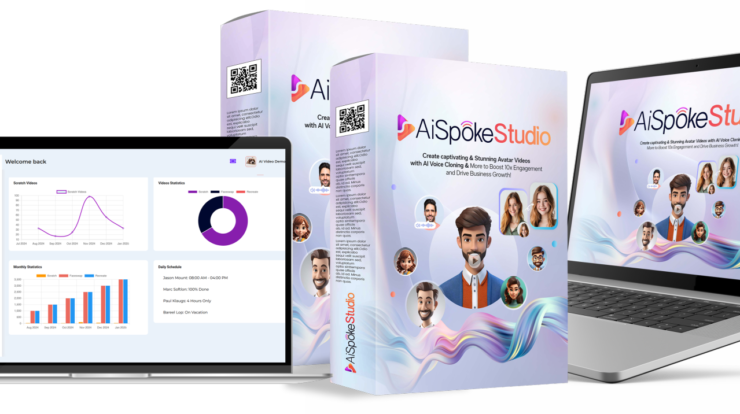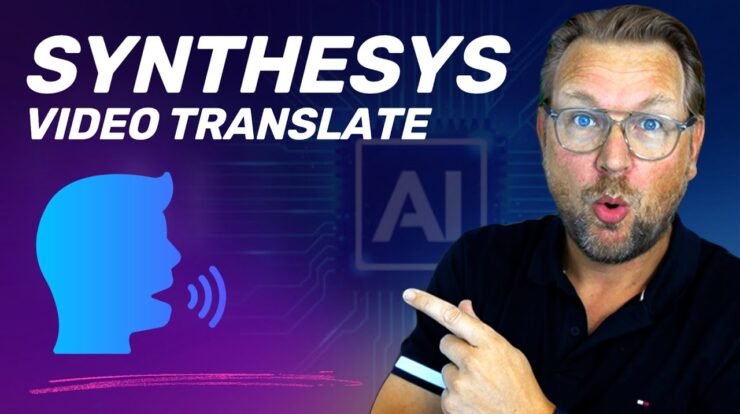Imagine a world where creating a children’s book is as simple as clicking a few buttons. Sounds like a dream, right? Well, that’s exactly what the AI Childrens Book Maker promises. I stumbled upon this tool while browsing for innovative ways to engage my kids in reading, and I must say, it piqued my curiosity. As a parent and a lover of stories, I’m always on the lookout for tools that can help foster a love for reading in my little ones. The idea of using AI to create personalized books for children is both exciting and a bit daunting. So, I decided to dive in and see what this tool is all about.
The Promise of AI Childrens Book Maker
The AI Childrens Book Maker boasts an impressive array of features designed to make book creation a breeze. From crafting engaging storylines to generating vibrant illustrations, this tool promises to do it all. But does it live up to the hype? I’ve read a few AI Childrens Book Maker reviews that range from glowing praise to harsh criticism. Some users swear by its ease of use and the quality of the books it produces, while others warn of potential pitfalls. As I embarked on my own journey with this tool, I kept these varying perspectives in mind.

Getting Started with AI Childrens Book Maker
Setting up the AI Childrens Book Maker was surprisingly straightforward. After signing up, I was greeted with a user-friendly dashboard that guided me through the process. The first step was to choose a theme for the book. Whether it was a whimsical adventure or a heartwarming tale, the options were plentiful. I opted for a magical journey through a enchanted forest, a theme that I knew would captivate my kids. The next step was to input some basic information about the story’s characters and plot. This part felt a bit like filling out a form, but it was quick and painless.
AI Childrens Book Maker review: The Creative Process
Once I had the basics down, it was time to let the AI do its magic. The AI Childrens Book Maker uses advanced algorithms to generate both the text and illustrations for the book. I was impressed by how quickly it churned out the first draft. The story was coherent and the illustrations were charming, though a bit generic. I had the option to tweak the story and request new illustrations, which I did a few times to get the perfect fit. This iterative process was one of the highlights of using the tool. It felt like collaborating with a creative partner who was always ready to make adjustments.
The Quality of AI-Generated Content
One of the biggest questions I had was about the quality of the content generated by the AI Childrens Book Maker. After all, children’s books are not just about entertainment; they also play a crucial role in early literacy and cognitive development. The stories produced by the tool were generally well-structured and age-appropriate. However, I noticed that the language was sometimes a bit too simple, lacking the richness and depth that human-authored books often have. The illustrations, while colorful and engaging, sometimes felt a bit repetitive. Still, for a quick and easy way to create a personalized book, the AI Childrens Book Maker did a commendable job.

User Experience and Interface
The user interface of the AI Childrens Book Maker is one of its strongest points. It’s intuitive and easy to navigate, making it accessible even for those who are not tech-savvy. The drag-and-drop functionality for arranging pages and the ability to preview the book at any stage of the process were particularly useful. I also appreciated the built-in help features, which provided guidance whenever I was unsure about what to do next. Overall, the user experience was smooth and enjoyable, which is crucial for a tool meant to encourage creativity.
Customization and Flexibility
One of the key selling points of the AI Childrens Book Maker is its customization options. Users can tailor the story to fit their child’s interests, from choosing specific themes to naming characters after their kids. I found this feature to be a major plus, as it made the books feel more personal and engaging. However, I did encounter some limitations when trying to make more complex changes to the story or illustrations. The AI seemed to struggle with nuanced requests, often reverting to more generic options. Despite these limitations, the level of customization available was still impressive.
The Cost and Value of AI Childrens Book Maker
Pricing is always a crucial factor when considering any new tool, and the AI Childrens Book Maker is no exception. The tool offers a variety of pricing plans, ranging from a basic subscription to more advanced options with additional features. I opted for the mid-tier plan, which provided a good balance of features and cost. The value for money seemed reasonable, especially considering the time and effort saved in creating a book from scratch. However, I did notice that some of the more advanced features, like additional illustration styles, were only available in the higher-tier plans, which could be a deterrent for some users.
Comparing AI Childrens Book Maker to Traditional Methods
As someone who has dabbled in creating children’s books the old-fashioned way, I was curious to see how the AI Childrens Book Maker stacked up. Traditional book creation involves a lot of time, effort, and often, collaboration with illustrators and editors. With the AI tool, I was able to produce a book in a fraction of the time it would have taken me otherwise. The trade-off, of course, is the personal touch and creative control that comes with traditional methods. While the AI Childrens Book Maker offers convenience and speed, it can’t quite replicate the unique charm of a handcrafted book.

Pros and Cons of Using AI Childrens Book Maker
After spending some time with the AI Childrens Book Maker, I’ve compiled a list of pros and cons. On the positive side, the tool is incredibly user-friendly, making it accessible to a wide audience. The speed at which it generates content is a major advantage, especially for busy parents or educators. The customization options are also a big plus, allowing users to create books that feel personal and unique. However, there are some drawbacks to consider. The quality of the AI-generated content can be hit or miss, and the more advanced features come at a higher cost. Additionally, the tool may not be suitable for those who prefer a more hands-on approach to storytelling.
Real User Experiences and Feedback
To get a broader perspective, I looked into various AI Childrens Book Maker reviews from other users. The feedback was mixed, but there were some common themes. Many users praised the tool’s ease of use and the joy of seeing their children engage with personalized books. However, some expressed disappointment with the quality of the AI-generated content, feeling that it lacked the creativity and depth of traditional books. Others mentioned technical issues and limitations in customization. Overall, the consensus seemed to be that while the AI Childrens Book Maker is a useful tool, it’s not without its flaws.
AI Childrens Book Maker review: Is It Worth It?
So, is the AI Childrens Book Maker worth the investment? It depends on your needs and expectations. If you’re looking for a quick and easy way to create personalized books for your children, this tool could be a game-changer. The convenience and customization options are hard to beat. However, if you’re a stickler for quality and prefer a more hands-on approach to storytelling, you might find the AI-generated content lacking. For me, the AI Childrens Book Maker was a fun and useful tool that added a new dimension to our reading time. But it’s not a replacement for the magic of traditional storytelling.
Alternatives to AI Childrens Book Maker
If the AI Childrens Book Maker doesn’t quite meet your needs, there are other options to consider. Some users have had success with other AI-driven tools like Storybird, which offers a different approach to creating children’s books. There are also traditional publishing platforms like Amazon’s Kindle Direct Publishing, which allow you to create and sell your own books. For those who enjoy the creative process, collaborating with illustrators and writers through platforms like Fiverr can be a rewarding experience. Each option has its own set of pros and cons, so it’s worth exploring to find the best fit for your needs.

The Future of AI in Children’s Literature
The rise of AI in children’s literature is an exciting development, and tools like the AI Childrens Book Maker are just the beginning. As AI technology continues to evolve, we can expect to see even more sophisticated tools that offer greater customization and higher-quality content. The potential for AI to revolutionize storytelling is immense, but it’s important to balance innovation with the timeless value of human creativity. As a parent, I’m excited to see where this journey takes us, but I’ll always cherish the handmade books that my kids and I create together.
Personalizing Your Child’s Reading Experience
One of the most compelling aspects of the AI Childrens Book Maker is its ability to personalize the reading experience. Seeing your child’s name and favorite characters in a story can make reading more engaging and meaningful. I’ve noticed that my kids are more eager to read when the stories are tailored to their interests. This personalization can also be a great way to introduce new topics or themes in a way that feels relevant and exciting. While the AI Childrens Book Maker offers a convenient way to achieve this, it’s also possible to personalize books through more traditional methods, like writing and illustrating your own stories.
The Role of AI in Education
Beyond entertainment, AI tools like the AI Childrens Book Maker have the potential to play a significant role in education. By creating personalized learning materials, educators can engage students in a more meaningful way. I’ve spoken with a few teachers who have used the tool to create books that align with their curriculum, and the feedback has been positive. The ability to quickly generate content that is both educational and engaging could be a game-changer for classrooms. However, it’s important to ensure that the quality of the content meets educational standards and complements traditional teaching methods.
Addressing Concerns About AI in Children’s Books
There are valid concerns about the use of AI in children’s books, particularly regarding the quality and authenticity of the content. Some parents and educators worry that AI-generated stories might lack the emotional depth and cultural relevance that human-authored books provide. I share these concerns and believe it’s crucial to use AI tools like the AI Childrens Book Maker as a supplement rather than a replacement for traditional storytelling. By combining the best of both worlds, we can create a rich and diverse reading experience for our children.

Final Thoughts on AI Childrens Book Maker
My journey with the AI Childrens Book Maker has been an eye-opening experience. While it’s not perfect, the tool offers a convenient and engaging way to create personalized books for children. The ease of use and customization options are major advantages, but the quality of the AI-generated content can be inconsistent. As with any new technology, it’s important to approach it with an open mind and realistic expectations. Whether you’re a parent looking to enhance your child’s reading experience or an educator seeking new ways to engage students, the AI Childrens Book Maker is worth considering. Just remember, it’s a tool to be used alongside, not in place of, the timeless joy of storytelling.






